Weidong Zhan
KnowLogic: A Benchmark for Commonsense Reasoning via Knowledge-Driven Data Synthesis
Mar 08, 2025Abstract:Current evaluations of commonsense reasoning in LLMs are hindered by the scarcity of natural language corpora with structured annotations for reasoning tasks. To address this, we introduce KnowLogic, a benchmark generated through a knowledge-driven synthetic data strategy. KnowLogic integrates diverse commonsense knowledge, plausible scenarios, and various types of logical reasoning. One of the key advantages of KnowLogic is its adjustable difficulty levels, allowing for flexible control over question complexity. It also includes fine-grained labels for in-depth evaluation of LLMs' reasoning abilities across multiple dimensions. Our benchmark consists of 3,000 bilingual (Chinese and English) questions across various domains, and presents significant challenges for current LLMs, with the highest-performing model achieving only 69.57\%. Our analysis highlights common errors, such as misunderstandings of low-frequency commonsense, logical inconsistencies, and overthinking. This approach, along with our benchmark, provides a valuable tool for assessing and enhancing LLMs' commonsense reasoning capabilities and can be applied to a wide range of knowledge domains.
A Roadmap for Big Model
Apr 02, 2022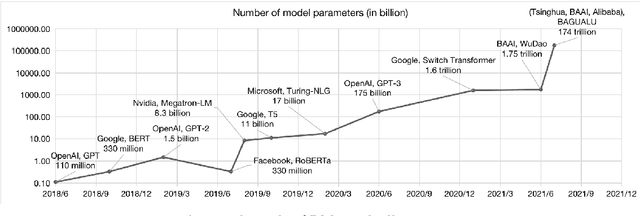

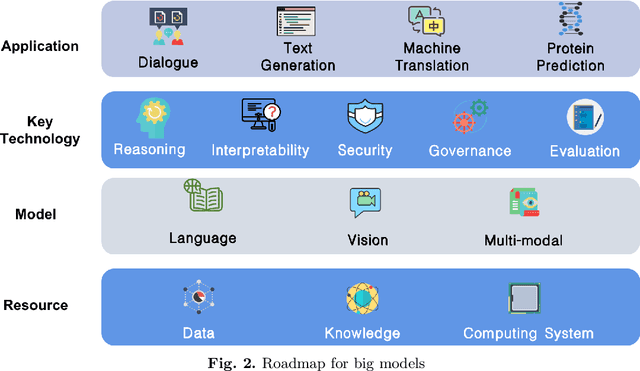
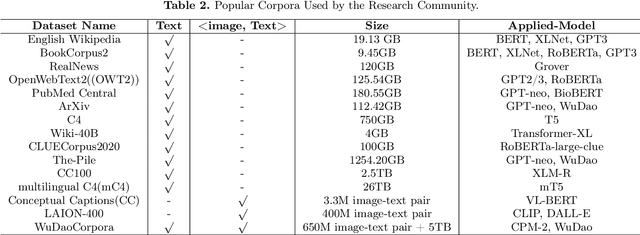
Abstract:With the rapid development of deep learning, training Big Models (BMs) for multiple downstream tasks becomes a popular paradigm. Researchers have achieved various outcomes in the construction of BMs and the BM application in many fields. At present, there is a lack of research work that sorts out the overall progress of BMs and guides the follow-up research. In this paper, we cover not only the BM technologies themselves but also the prerequisites for BM training and applications with BMs, dividing the BM review into four parts: Resource, Models, Key Technologies and Application. We introduce 16 specific BM-related topics in those four parts, they are Data, Knowledge, Computing System, Parallel Training System, Language Model, Vision Model, Multi-modal Model, Theory&Interpretability, Commonsense Reasoning, Reliability&Security, Governance, Evaluation, Machine Translation, Text Generation, Dialogue and Protein Research. In each topic, we summarize clearly the current studies and propose some future research directions. At the end of this paper, we conclude the further development of BMs in a more general view.
Premise-based Multimodal Reasoning: A Human-like Cognitive Process
May 15, 2021
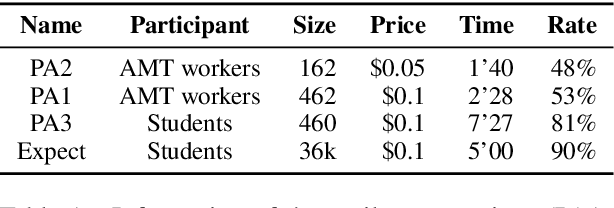
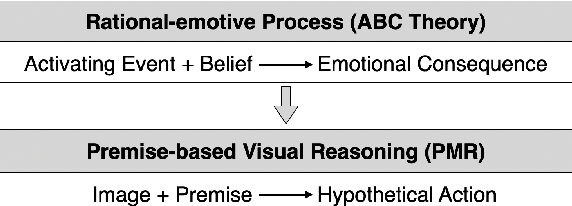

Abstract:Reasoning is one of the major challenges of Human-like AI and has recently attracted intensive attention from natural language processing (NLP) researchers. However, cross-modal reasoning needs further research. For cross-modal reasoning, we observe that most methods fall into shallow feature matching without in-depth human-like reasoning.The reason lies in that existing cross-modal tasks directly ask questions for a image. However, human reasoning in real scenes is often made under specific background information, a process that is studied by the ABC theory in social psychology. We propose a shared task named "Premise-based Multimodal Reasoning" (PMR), which requires participating models to reason after establishing a profound understanding of background information. We believe that the proposed PMR would contribute to and help shed a light on human-like in-depth reasoning.
Problems and Countermeasures in Natural Language Processing Evaluation
Apr 20, 2021Abstract:Evaluation in natural language processing guides and promotes research on models and methods. In recent years, new evalua-tion data sets and evaluation tasks have been continuously proposed. At the same time, a series of problems exposed by ex-isting evaluation have also restricted the progress of natural language processing technology. Starting from the concept, com-position, development and meaning of natural language evaluation, this article classifies and summarizes the tasks and char-acteristics of mainstream natural language evaluation, and then summarizes the problems and causes of natural language pro-cessing evaluation. Finally, this article refers to the human language ability evaluation standard, puts forward the concept of human-like machine language ability evaluation, and proposes a series of basic principles and implementation ideas for hu-man-like machine language ability evaluation from the three aspects of reliability, difficulty and validity.
Building an Ellipsis-aware Chinese Dependency Treebank for Web Text
Jan 23, 2018


Abstract:Web 2.0 has brought with it numerous user-produced data revealing one's thoughts, experiences, and knowledge, which are a great source for many tasks, such as information extraction, and knowledge base construction. However, the colloquial nature of the texts poses new challenges for current natural language processing techniques, which are more adapt to the formal form of the language. Ellipsis is a common linguistic phenomenon that some words are left out as they are understood from the context, especially in oral utterance, hindering the improvement of dependency parsing, which is of great importance for tasks relied on the meaning of the sentence. In order to promote research in this area, we are releasing a Chinese dependency treebank of 319 weibos, containing 572 sentences with omissions restored and contexts reserved.
 Add to Chrome
Add to Chrome Add to Firefox
Add to Firefox Add to Edge
Add to Edge